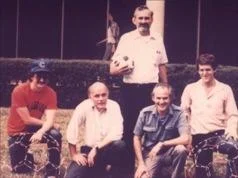The Journal of Young Investigators is proud to announce the success of the second annual Virtual Poster Session. Undergraduate students participated in this one-of-a-kind event, demonstrating the variety and quality of research that can be found around the world.
A Peek into the Mind of a Nobel Laureate: An Exclusive Interview with Sir Harry Kroto
Role of S-nitrosoglutathione and Hydrogen Peroxide on Cathepsin D Chemical Modification and Function
Alzheimer's disease (AD) is a progressive neurodegenerative disease characterized by deposits of β-amyloid peptide (Aβ) and insoluble hyperphosphorylated Tau protein. Cathepsin D (CTSD) is the main lysosomal protease and it has been suggested as hyperphosphorylated Tau-degradating enzyme. Oxidants such as hydrogen peroxide (H2O2) and nitric oxide (NO) and its derivatives, S-nitrosoglutathione (GSNO) are greatly generated during altered states, such as AD. Oxidants can react with proteins causing post-translational modifications, such as S-nitrosylation and S-glutathionylation. Therefore, we hypothesize that oxidants generated during several stages of AD, cause post-translational modifications on CTSD, leading to its inactivation.
Relative Importance of Physical Constraints on Decomposition
Soil organic matter (SOM) stability is thought to be dependent almost entirely on temperature, moisture, and microbial dynamics. While soil physical factors are also known determinants of SOM decomposition, proportionally little work has attempted to determine how these factors could regulate future rates of CO2 release from soils under a changing climate. Here, paired lab-field experiments explore the effects of change in the physical environment and carbon dioxide (CO2) respiration of SOM in mineral soil from an 80-year old red spruce forest stand in Nova Scotia, Canada.

